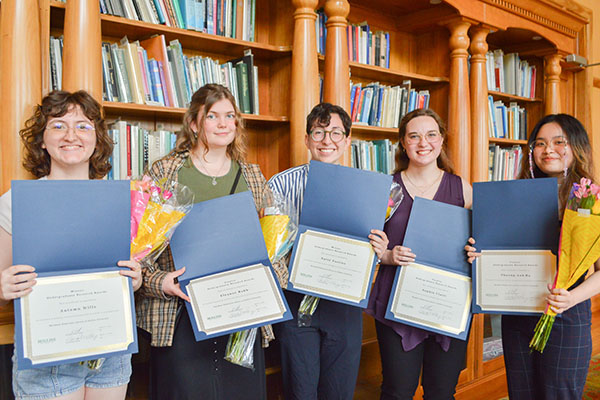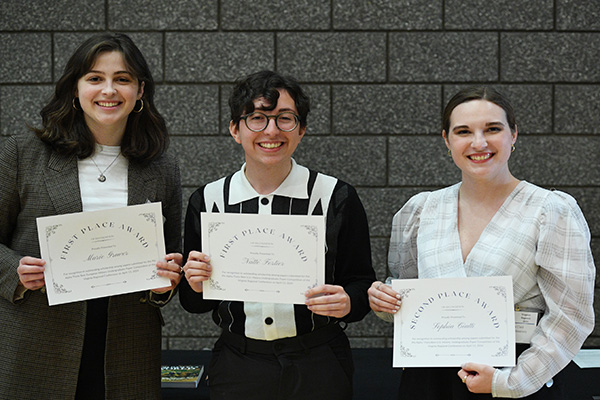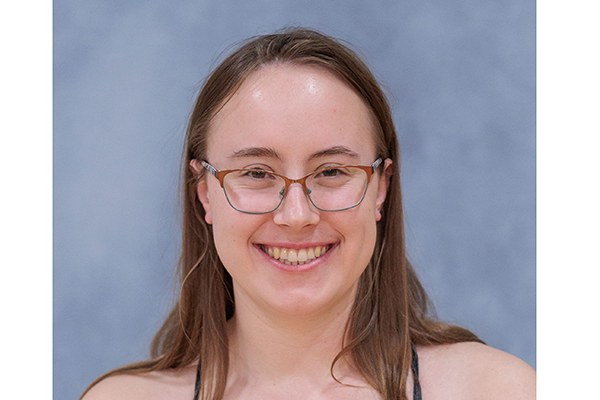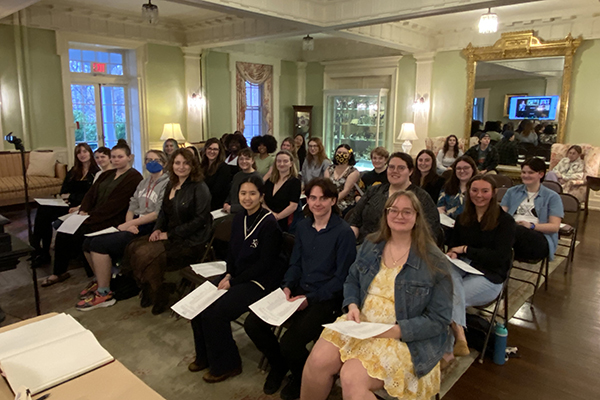A Hollins alumna has received one of the most notable tributes in the fields of health and medicine.
Mary Elizabeth “Mary Beth” Hatten ’71, Frederick P. Rose Professor and head of the Laboratory of Developmental Neurobiology at The Rockefeller University in New York City, has been elected to the National Academy of Medicine (NAM). The honorific society features more than 2,000 members chosen by their peers in recognition of outstanding achievement.
In announcing the recognition, The Rockefeller University noted that Hatten’s research “has shed light on the mechanisms of neuronal differentiation and migration in the cerebellar cortex. During development, neurons must travel from their birth sites to their proper adult locations in an intricate concert of molecular, genetic, and spatial events. Mapping these processes – and how they can go awry – is essential to understanding various brain diseases and developmental abnormalities, including childhood epilepsy and medulloblastoma, a prevalent metastatic brain tumor that affects children and originates during embryonic development.”
Hatten joined Rockefeller in 1992 and was appointed the university’s first female full professor and the first female to lead a research laboratory there. “Early in her career, using innovative real-time imaging, Hatten demonstrated how developing neurons migrate along the lines of glial cells, supportive cells of the nervous system that are implicated in disease pathology,” the university said. “Her research has revealed various molecular regulators of migration, including Astn1, which is a receptor critical for glial-guided migration, and Astn2, which was recently shown to facilitate efficient brain activity and has been identified as a risk factor in neurodevelopmental disorders when mutated. Another key discovery from the Hatten lab was mPar6, which helps control the speed of neuronal migration along glial fibers. Most recently, Hatten has been exploring how changes in the DNA-packaging complex chromatin help guide formation of the cerebellum, the part of the brain that enables learning and the execution of complex movements.”
The announcement of Hatten’s election to NAM also noted her work in co-creating GENSAT, the Gene Expression Nervous System Atlas, in 2003. “This genetic atlas of the mammalian brain is a critical resource for labs worldwide that are researching the central nervous system.”
Hatten was one of a trio of Rockefeller researchers to earn NAM membership this year. “Each of these remarkable scientists has reached important milestones by boldly following the most interesting and pressing scientific questions of our times,” said Richard P. Lifton, the university’s president. “I am immensely proud to be a colleague of these three great Rockefeller faculty and delighted that they are receiving this prestigious honor.”
During her distinguished career, Hatten has received many other accolades, including the McKnight Endowment Fund for Neuroscience Investigator Award; the Javits Neuroscience Investigator Award; and a Faculty Award for Women Scientists and Engineers from the National Science Foundation. In 2015 she was presented the prestigious Max Cowan Award, which honors a neuroscientist for outstanding work in developmental neuroscience, and was elected to the National Academy of Sciences in 2017. She is also a recipient of the Hollins Distinguished Alumnae Award and was the featured speaker at Hollins’ 175th commencement exercises.
Photo Credit: The Rockefeller University











